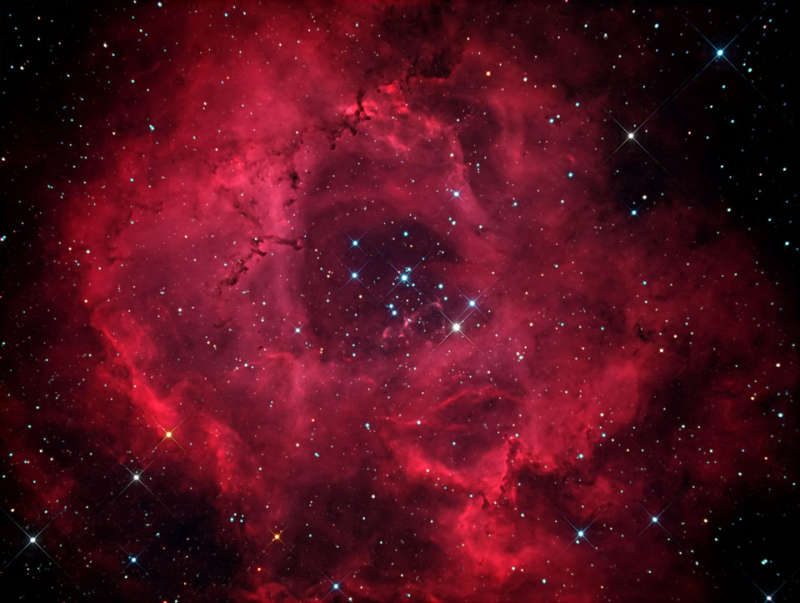
|
Credit & Copyright: Brian Davis
Explanation:
The Rosette Nebula is not the only cosmic cloud
of gas and dust to evoke the imagery
of flowers -- but it is the most famous.
At the edge of a large
molecular cloud
in Monoceros, some 5,000 light
years away, the petals of this
rose are actually a
stellar nursery whose lovely, symmetric shape is
sculpted by the
winds and radiation from its central cluster of
hot young stars.
The stars in the energetic cluster, cataloged
as NGC 2244, are only
a few million years old, while the central cavity
in the Rosette Nebula,
cataloged as NGC 2237, is about 50 light-years in diameter.
The nebula can be seen
firsthand with a small telescope toward the constellation of the
Unicorn (Monoceros).
|
January February March April May June July August September October November December |
| ||||||||||||||||||||||||||||||||||||||||||||||||
NASA Web Site Statements, Warnings, and Disclaimers
NASA Official: Jay Norris. Specific rights apply.
A service of: LHEA at NASA / GSFC
& Michigan Tech. U.
Based on Astronomy Picture
Of the Day
Publications with keywords: NGC 2244 - NGC 2237 - Rosette Nebula - star formation
Publications with words: NGC 2244 - NGC 2237 - Rosette Nebula - star formation
See also:
- APOD: 2025 December 9 Á The Heart of the Soul Nebula
- APOD: 2025 July 16 Á The Rosette Nebula from DECam
- APOD: 2025 July 10 Á Lynds Dark Nebula 1251
- APOD: 2025 June 23 Á W5: Pillars of Star Formation
- APOD: 2025 June 17 Á Rosette Nebula Deep Field
- APOD: 2025 April 28 Á Gum 37 and the Southern Tadpoles
- APOD: 2025 March 26 Á Star Formation in the Pacman Nebula
